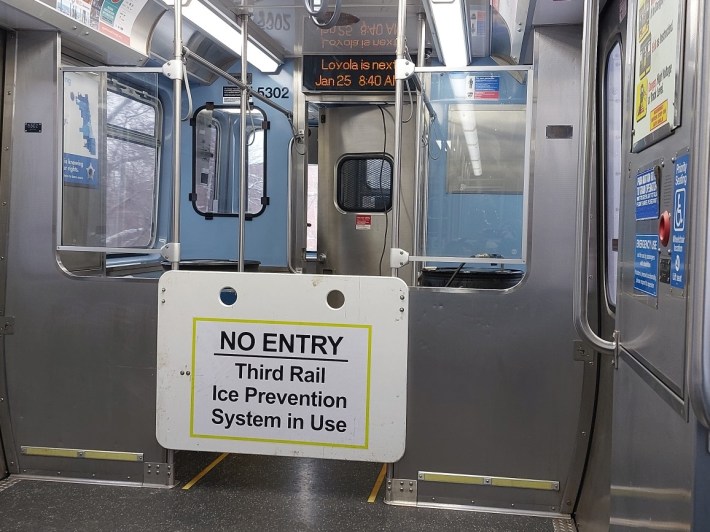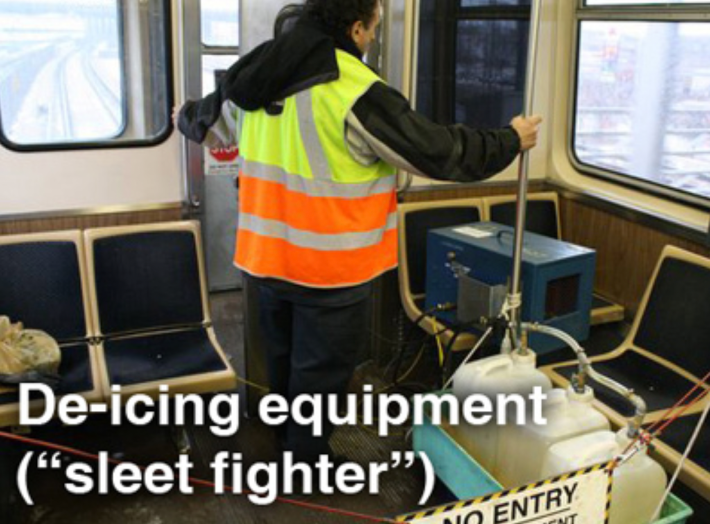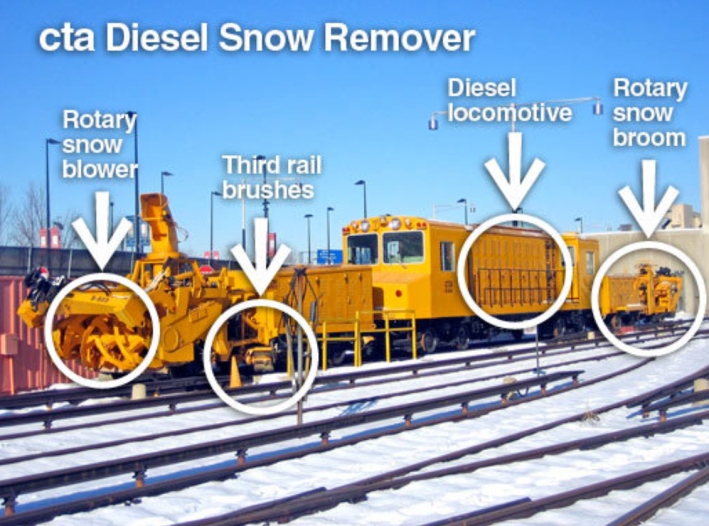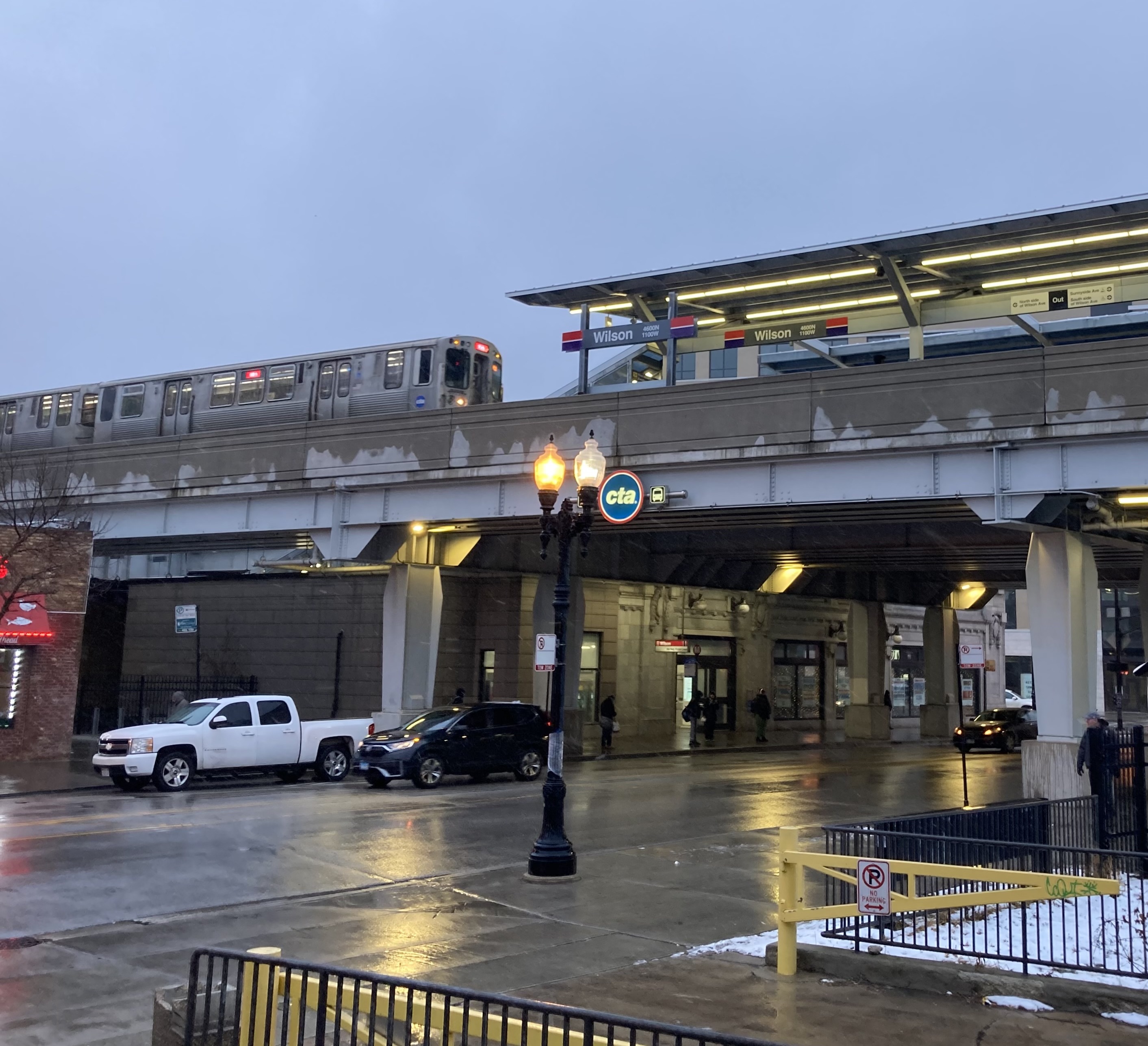Like all other local transit advocacy organizations, Streetsblog Chicago has spent plenty of time recently talking about the CTA's current problems with unreliable service, crime, and smoky, unsanitary facilities.
But let's take a break from that to discuss something the transit agency seems to do reasonably well, in my experience: keeping its equipment functioning during challenging winter weather.
Winter Wednesday. This morning's commute on the CTA thru downtown Chicago. #weather #news #chicago #ilwx #snow pic.twitter.com/LkqMb2IBl0
— Barry Butler Photography (@barrybutler9) January 25, 2023
This topic was on my mind this snowy morning after Streetsblog reader Beth Medley reported seeing this sign in the last car of an inbound Red Line train. "There were two big vat type of things, and it looked like two generator things."

Now, after 12-plus years writing about the CTA, I suppose I should have been familiar with this set-up, but it didn't ring a bell. And oddly it looks like Streetsblog Chicago has never run a dedicated piece about the CTA's winter strategy (although we have covered Metra's cold-weather challenges and tactics), so here goes.
When I contacted the CTA about the Red Line sign, a spokesperson responded, "As part of our winter preparedness measures, some railcars are equipped with special equipment that distributes deicer fluid onto the third rail. This deicing fluid keeps ice from building up and getting in the way of trains collecting power."

The CTA rep added, "For lines that don't operate 24 hours, special 'sleet trains' are dispatched overnight just to remove snow and ice and spread deicing fluid on the electrified third rail so the line is ready for service in the morning."
Here are some more factoids about the CTA's cold-weather train tactics from the agency's website. In frigid temperatures, rail workers turn on track switch heaters to keep the switches from freezing.
A video on the CTA's cold-weather strategy.
All 'L' cars have sleet scrapers, blade-like attachments that are deployed to keep the third rail clear in the event of snowfall, a sleet storm, or icy weather, again to make sure the trains can get power from the third rail. Snowplows are attached to the front of all trains.
On top of that, there are four diesel-powered "snow fighter" locomotives that can travel all over the 'L' network. So even if it's impossible to get electric power from the third rail due to ice or snow, the locomotives can still get around to clear the way.

In addition, the CTA says the overhead "french fry" heaters at all 120-plus outdoor station platforms are inspected, tested and turned on before November 1, every year. Pro-tip: The heaters only warm exposed skin, by speeding up the water molecules on the surface, so point your face towards the orange glow in order to feel toastier.
The following tactics are used to keep CTA buses running in nasty weather (this is the agency's language, lightly edited):
- All buses undergo an inspection process to get ready for cold weather operation. This winter prep includes checking heaters, engine thermostats and batteries, and making sure windows, roof hatches and doors close securely.
- Buses are equipped with engine pre-heaters that circulate coolants through bus engines in cold weather so motors can be started up easily and speed the warming of bus interiors. The CTA says this also reduces emissions and results in fuel cost savings.
- The agency says it works closely with other city departments, such as the Chicago Departments of Transportation and Streets and Sanitation, to keep informed about road conditions and implement reroutes if necessary.
- Salt and sand get delivered to bus and rail stations and facilities.
- Boilers at bus garages are inspected/tested.

Do you disagree with my assessment that, current staffing shortages aside, the CTA appears to generally do a pretty good job of keeping trains and buses functioning during inclement weather? Spill the beans about your experiences in the comment section.





